We are walking along the coast of Cádiz when we spot a striking building that outshines the surrounding buildings. The Cathedral of Cádiz is one of the most important sights in Cádiz and is visited daily by locals and tourists.
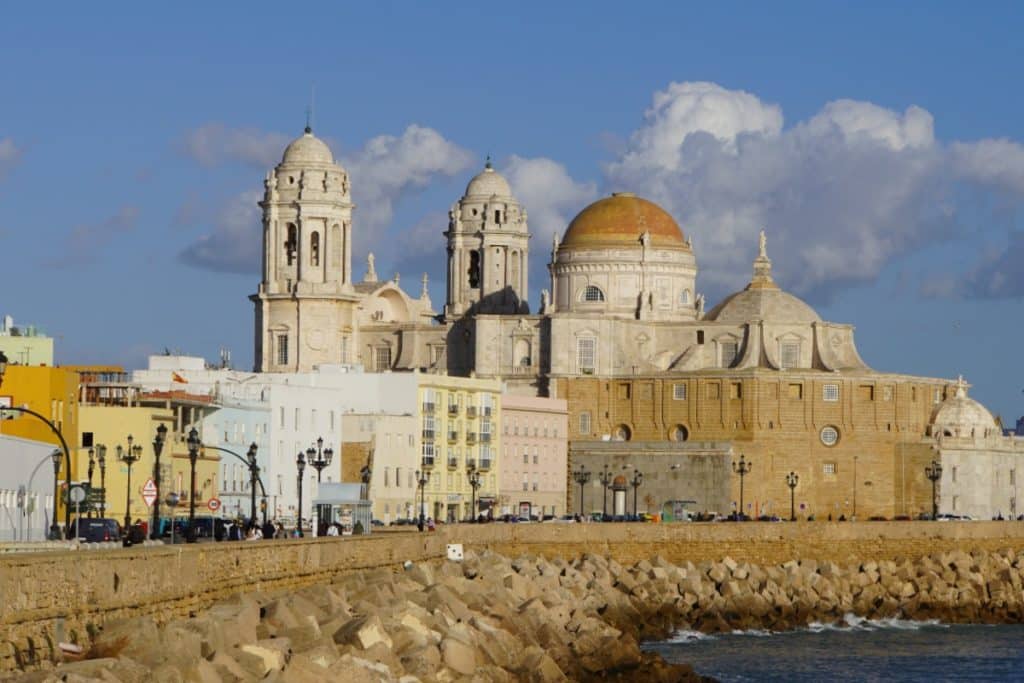
Catedral de Santa Cruz de Cádizeine is the cathedral of Cádiz, an impressive building that is also known as “The Cathedral of America”. Although Cádiz already had a cathedral, it was decided to build another one. The old cathedral did not seem representative and large enough to the people. As a flourishing trading city, especially in trade with America, they wanted to show off their wealth. In addition, Cádiz was experiencing great population growth at this time, which the old cathedral could no longer cope with, so construction of a new church began in 1722.
Several master builders were involved in its construction until its completion in 1838. Originally, a purely baroque building was planned, but it was then adapted to the style of the time. Today, elements of rococo and neoclassicism can also be found.
Why is the façade of Cádiz Cathedral two-tone?
From the outside, the cathedral has a very striking color division. This is due to the fact that construction took 116 years and the upper, lighter area was built much later.
Two different materials were used in the construction: Shell limestone and limestone. In this region, shell limestone is ideal for the construction of buildings. Not only was it quarried from the region, it is also well suited to the always quite humid maritime climate. The limestone used in the upper part, on the other hand, does not tolerate the effects of the weather so well. It has become very crumbly over the years. For a while, the interior had to be closed off for this reason. Today, a net protects visitors from falling stone.
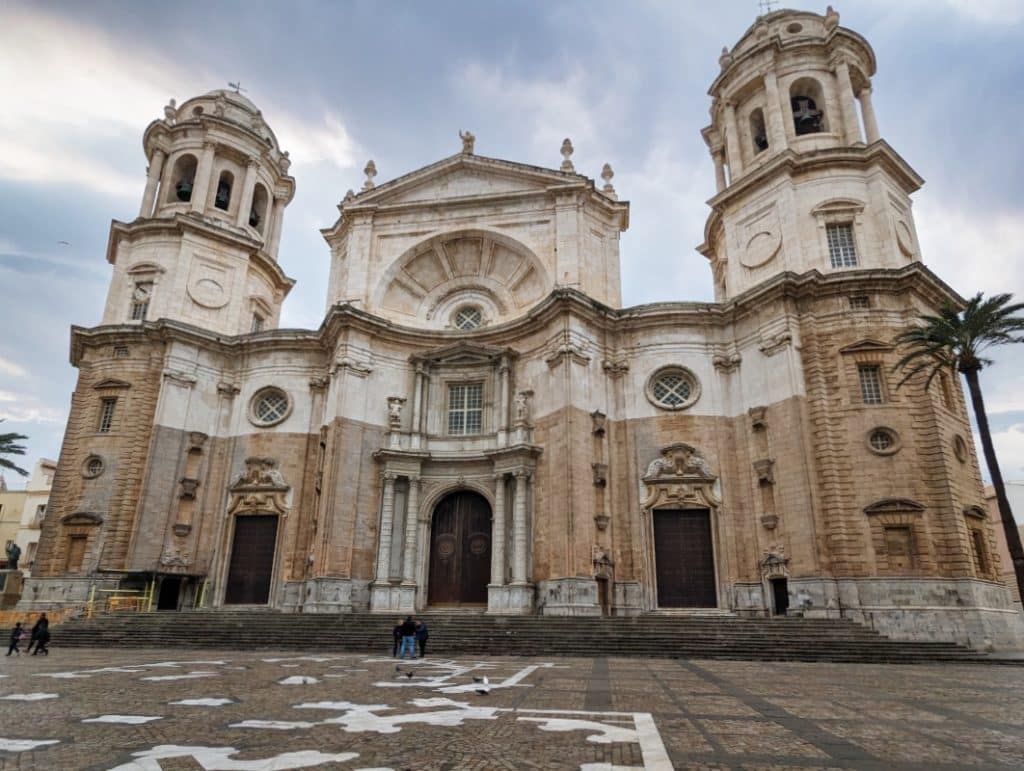
Convex and concave shapes alternate in the design of the main façade. This results in a really interesting look that I have never seen before.
Four ornate Corinthian columns flank the large main entrance. Above this, there is a large window in the newer part of the building. To the right and left of the window are the patron saints San Germán and San Servando. A large round arch with a triangular pediment forms the end. At the top of the gable is a Carrara marble figure of the Divine Redeemer.
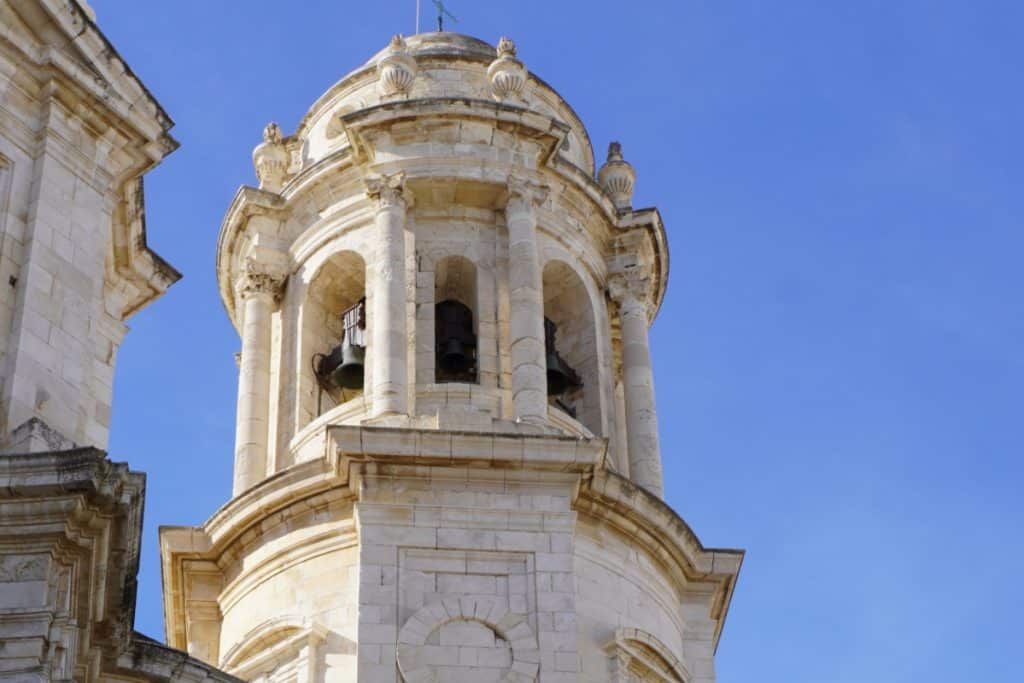
The smaller side portals are symmetrical. They end with the octagonal towers. The top section of the towers is divided by columns supporting a hemispherical dome. The bells in the towers can be seen from below.
The bright yellow cathedral dome, covered with glazed ceramic tiles, is particularly striking and clearly visible from anywhere in the city.
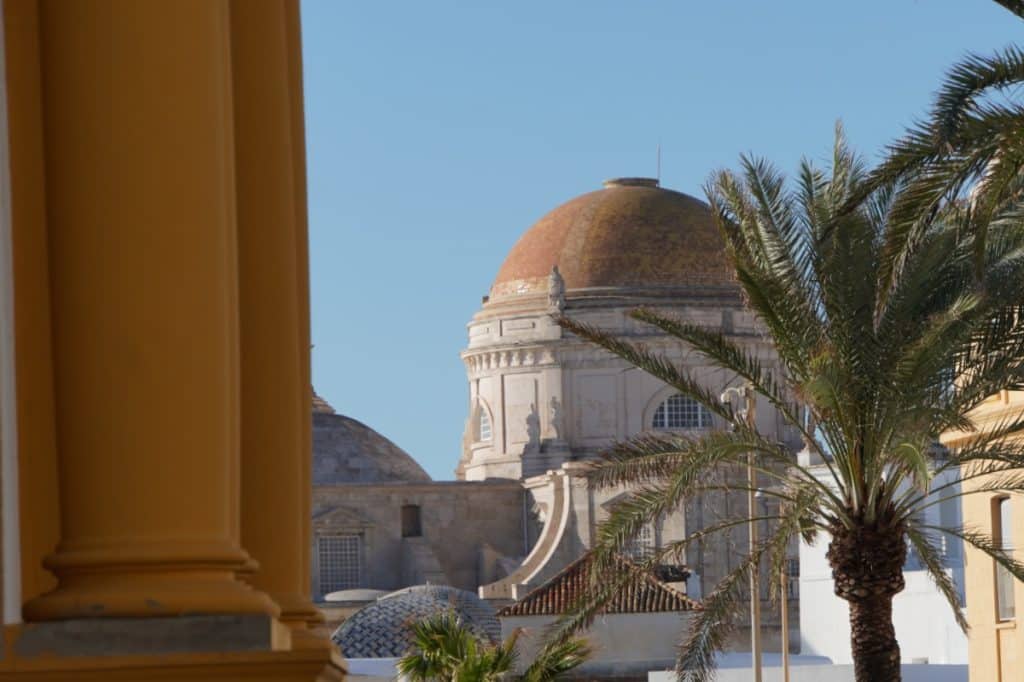
Visit to the cathedral
Once we had received our audio guide (available in German), which is included in the entrance fee, we were able to enter the church. A large, bright and quite high nave awaited us.
The audio guide explains the most important and interesting facts very well during the tour. You don’t have to listen to all the stations, but can select the topics you find interesting.
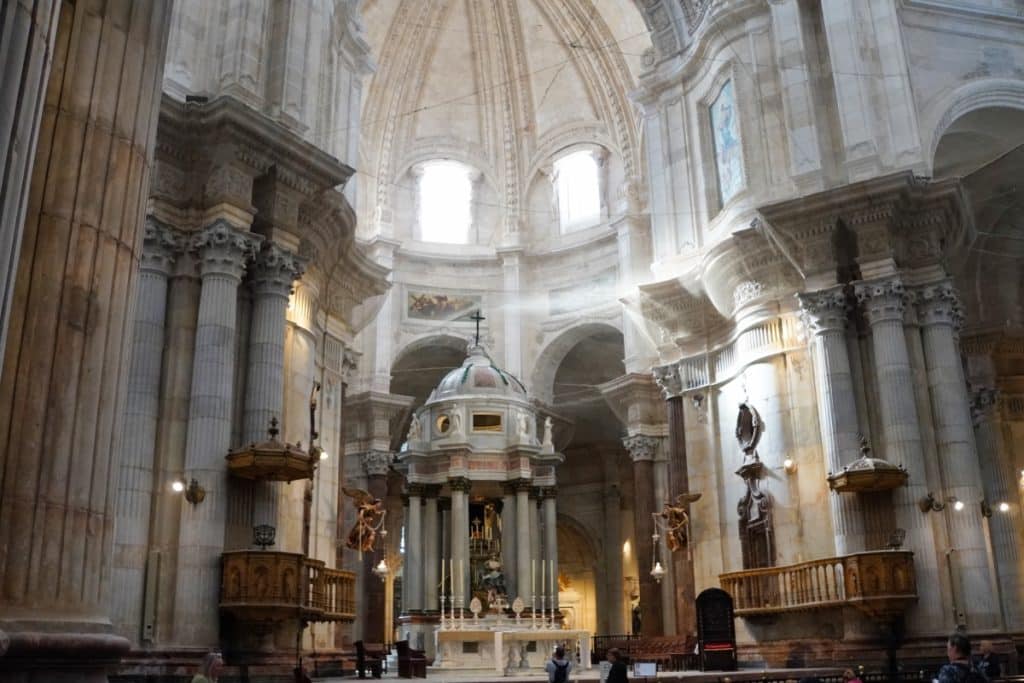
In contrast to many other churches, I found the main altar rather plain. There is no huge altarpiece to catch the eye. My attention was drawn more to the large and very high dome, which really impressed me.
There are smaller side chapels on both long sides of Cádiz Cathedral. If I haven’t lost count, there were 15 chapels with very different designs. Paintings by various artists hang in many of the chapels and some of them are decorated with beautiful sculptures. There are artistically designed altars. The names of the side chapels indicate that they are dedicated to different saints.
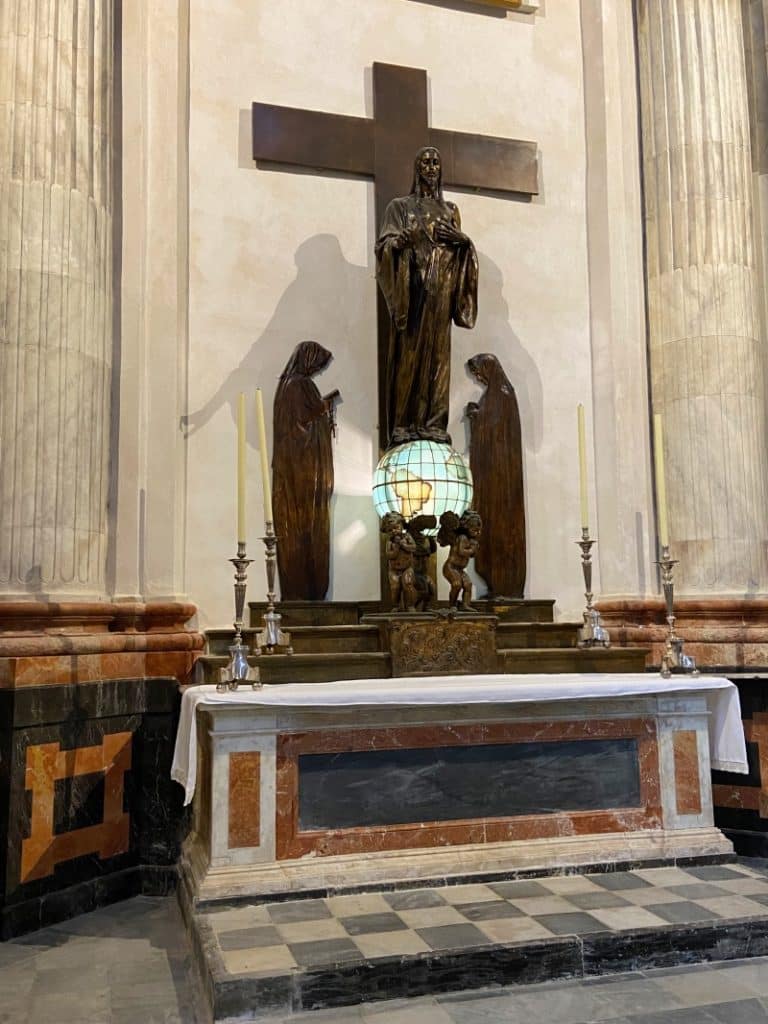
In front of the sacristy, which is separated by a grille, there is an octagonal vestibule. The sacristy is dominated by a neoclassical marble altar. A medallion depicting the apparition of Christ adorns the table. Estofado figures of St. Joseph and the resurrected Christ stand on a wooden chest of drawers, while impressive paintings hang on the walls.
Carved choir stalls
The choir in the cathedral of Cádiz is an impressive place within the church that almost magically attracted me.
We step through an ornate grille decorated with coats of arms and stand between the choir stalls. It is divided into two sections: a high stall that comes from the Cartuja de las Cuevas in Seville and a low stall that was made later. I am impressed by the beautiful wood carvings that make each individual chair unique.
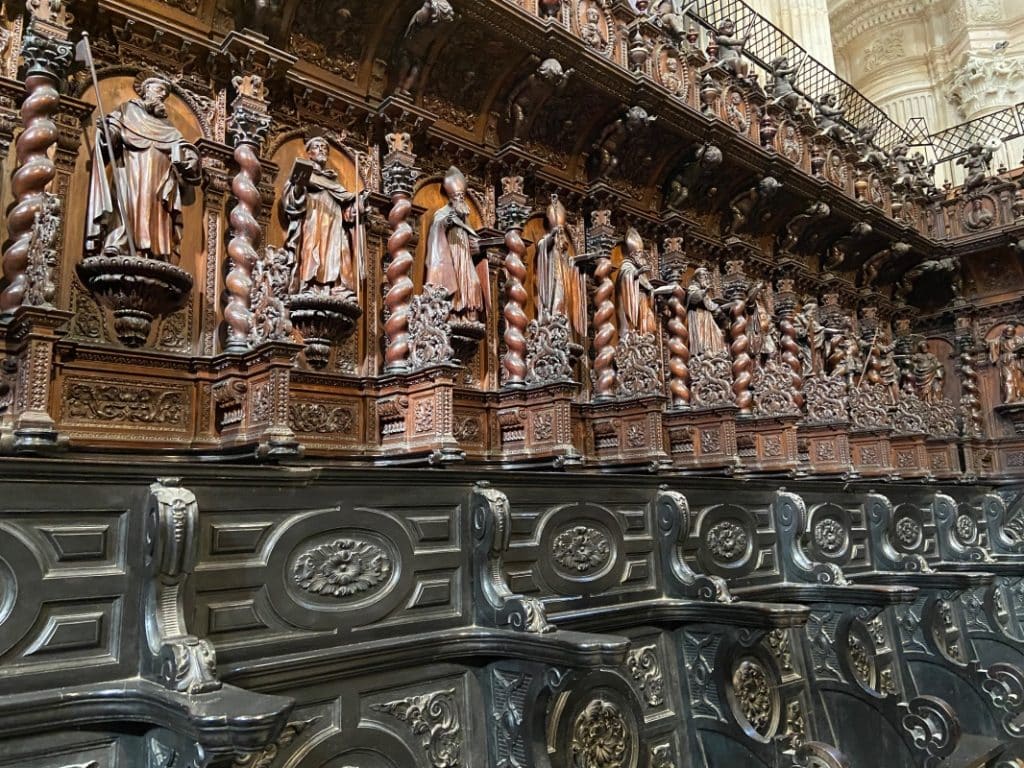
The two organs, which can be seen particularly well from here, should not be forgotten. The older organ is probably from the end of the 16th/beginning of the 17th century and comes from the old cathedral of Santa Cruz. The younger organ was inaugurated in 1870. Unfortunately, I have not heard it played. However, the sound is said to be amazingly well distributed in the large cathedral of Cádiz.
The crypt of Cádiz Cathedral
A staircase leads us into the crypt of Cádiz Cathedral. The surprise of the whole visit for us! I had never seen a crypt like this before.
The burial place under the cathedral was built from shell limestone by the master builder Vicente Acero. He created a circular room spanned by a very flat vault. Small chapels branch off from this room in a star shape and house individual tombs.
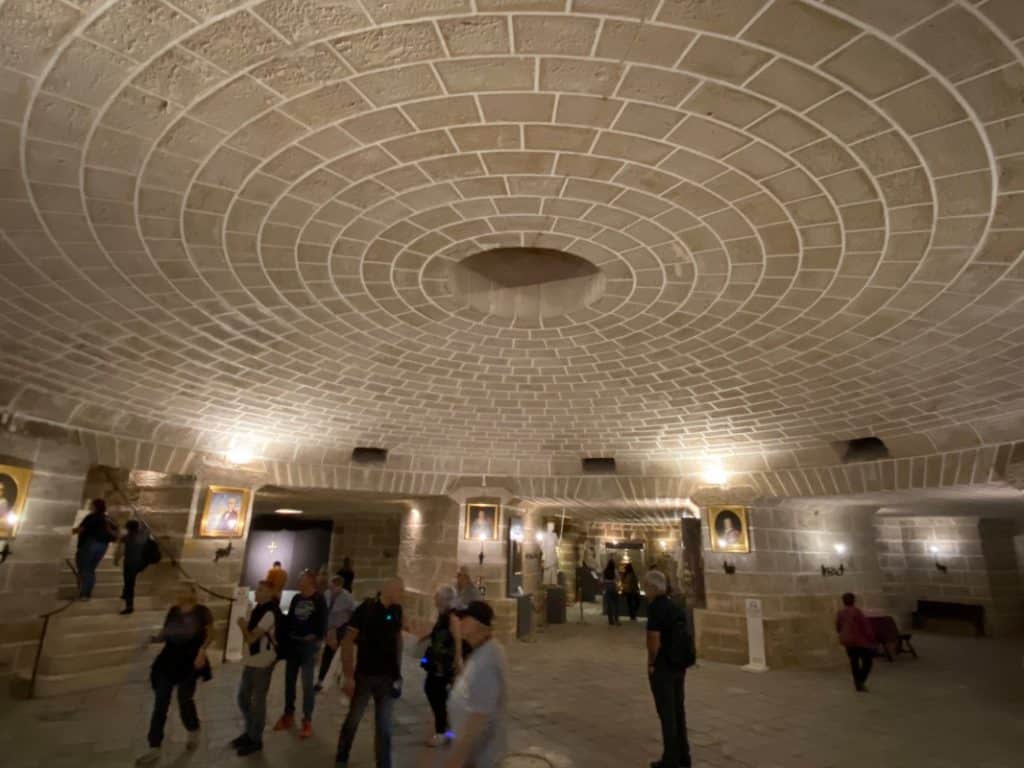
The circular room is something very special from an architectural point of view. It is located in the immediate vicinity of the sea. Especially when the waves are strong, you can even feel them in the crypt when you touch the walls. Another thing that struck me as very positive was the acoustics of the room. Even when people were talking during their tour, it was relatively quiet. There was no reverberation of voices or amplification of the volume.
Two famous figures from Cádiz are buried in the crypt: the composer Manuel de Falla (1876-1946) and the poet and essayist José María Pemán (1898-1981). Of course, the tombs of the bishops who have died since the cathedral in Cádiz was built can also be found here.
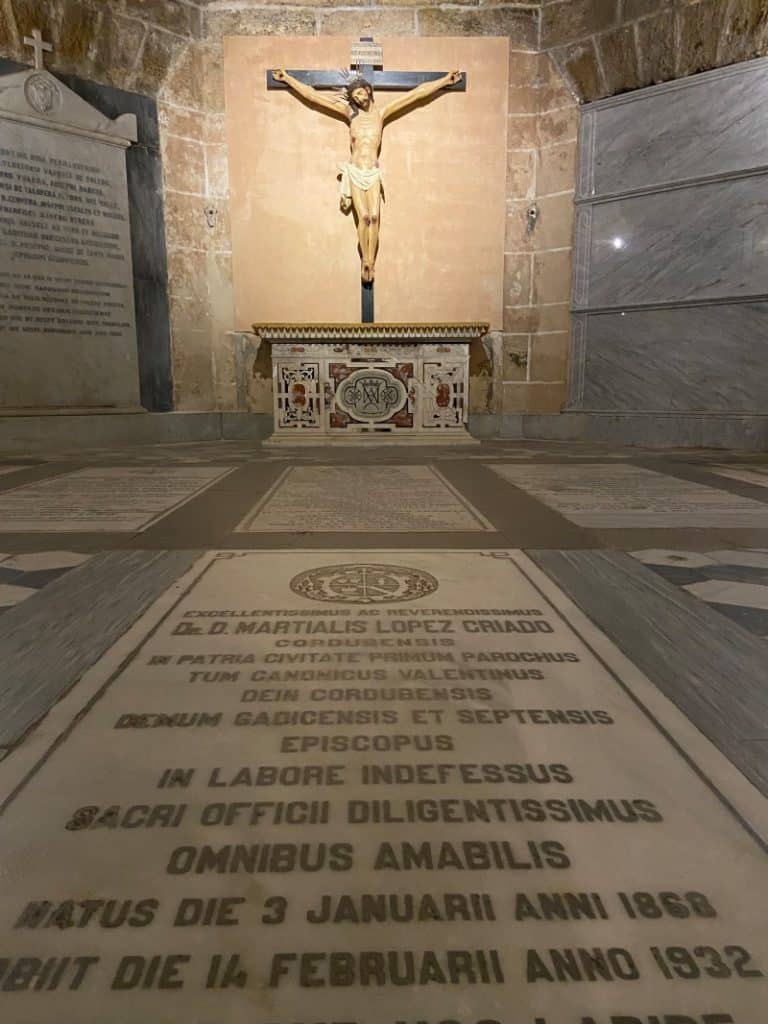
Torre del Reloj-what a view!
Right next to the entrance to the cathedral is the small entrance to the Torre del Reloj, the clock tower. In the middle of the 19th century, the tower was fitted with a clock that still works today.
If you want to enjoy the view from up there, you need an entrance ticket and a bit of stamina. There is no elevator to the top, but there are hardly any steps either. A snail-like ramp winds its way up almost the entire way and only at the end of the climb is there a narrow spiral staircase up to the exit.
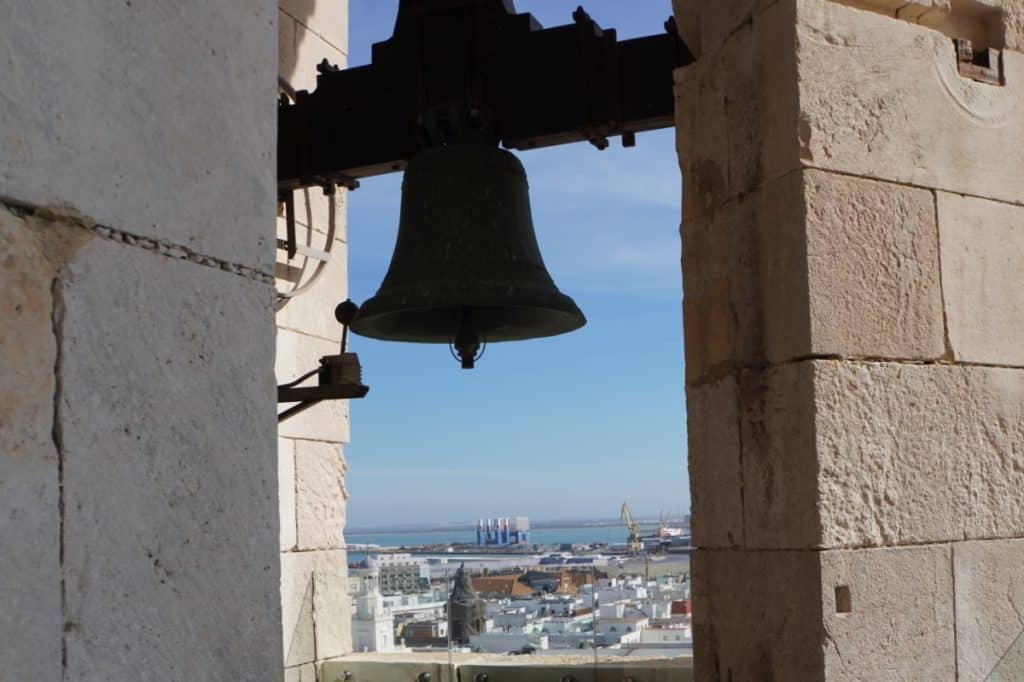
When I reached the top, my eyes first fell on the huge bells, then on my watch. I really hoped they wouldn’t ring and luckily they really didn’t. So we were able to walk past the bells without any problems and stand at the openings in the tower.
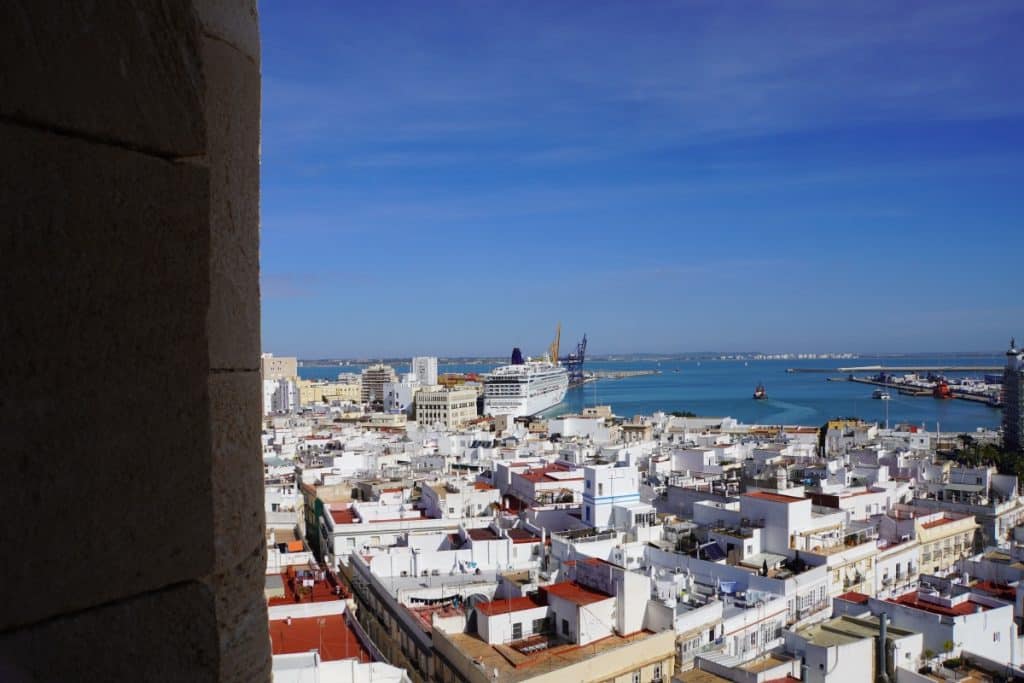
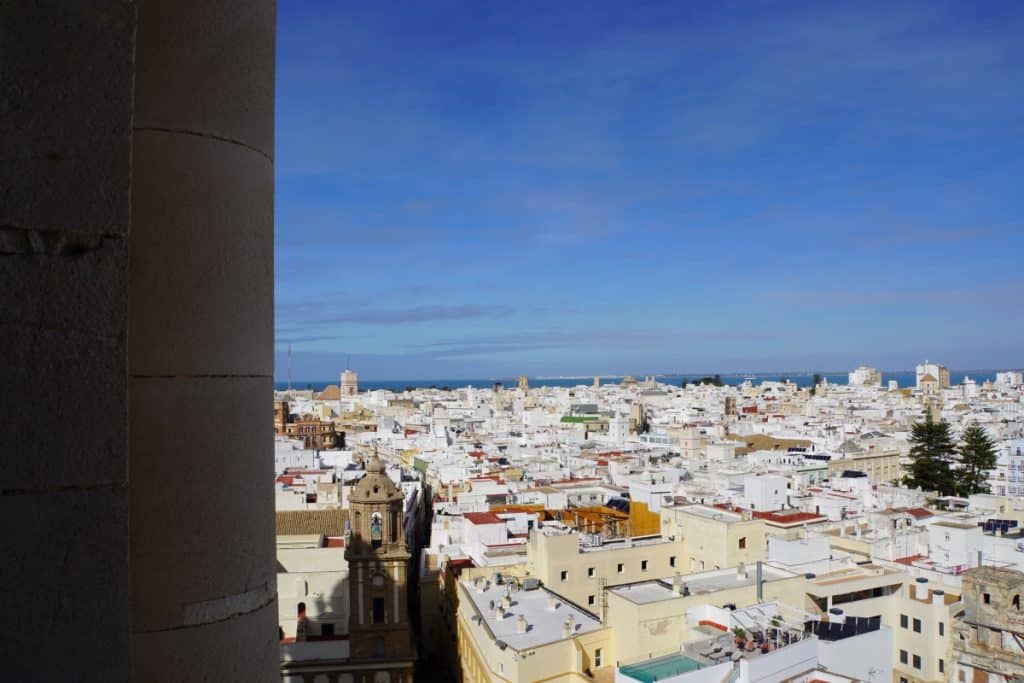
A wonderful 360-degree panoramic view opened up before us. From up here, you can really see the diversity of the city. The harbor, where only one cruise ship was anchored that day, and the view down into the bustling narrow streets of the city are particularly exciting. The structure of the city with its old and newer areas can be seen very clearly. Yes, and the one or other view of one of the roof terraces of the neighboring houses was also possible.
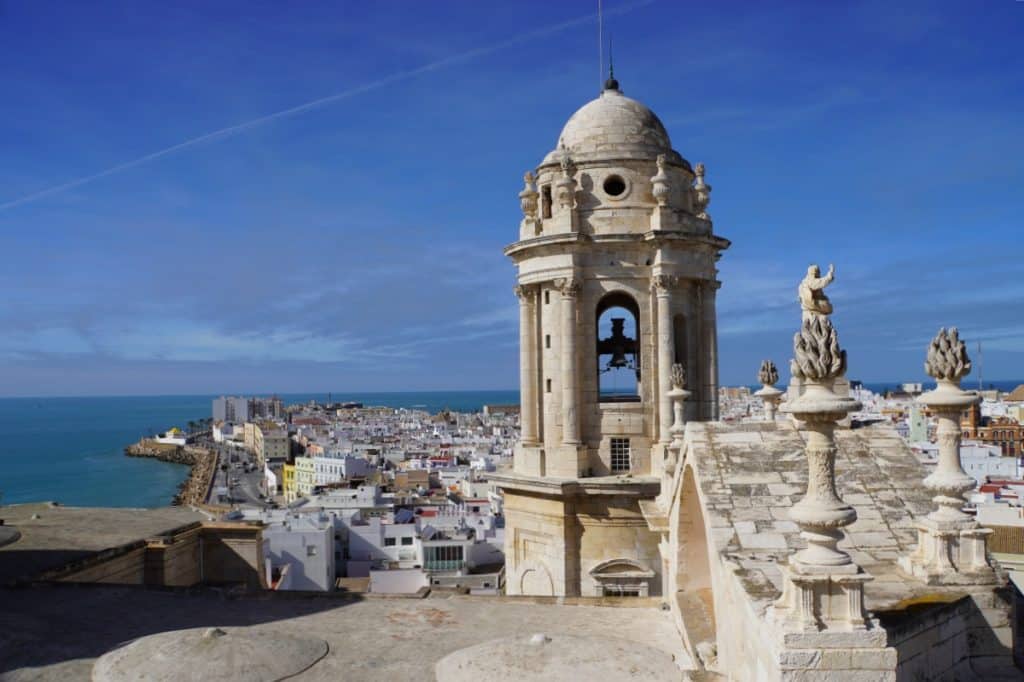
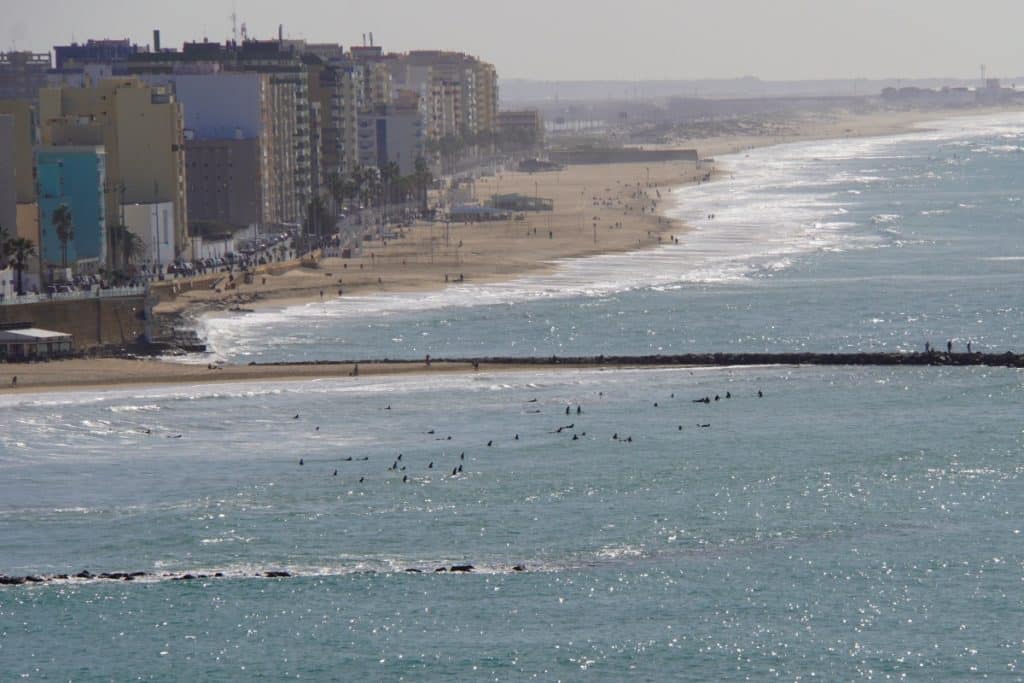
I find the view towards the sea particularly beautiful. The sun glistened on the water and I couldn’t see the end. I could have stood there for hours, dreaming and looking out to sea.
Casa de la Contaduría – the museum of the cathedral of Cádiz
At the end of our visit, we visited the Casa de la Contaduría. The building is located next to the Old Cathedral and on the west side of the Roman Theater.
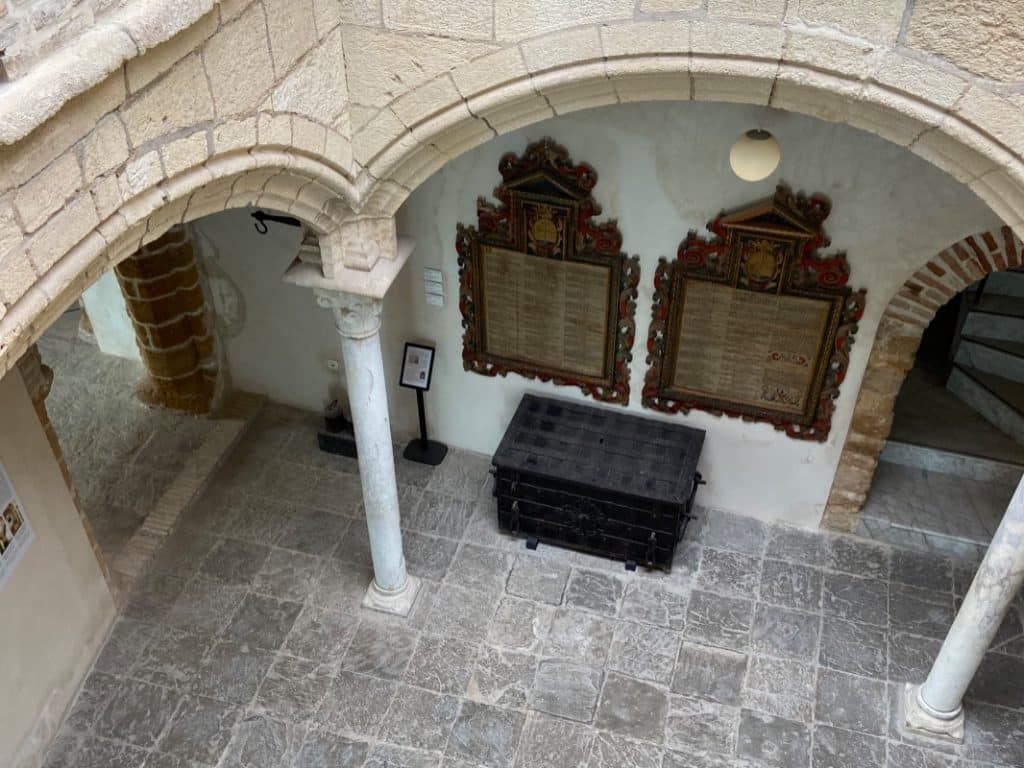
Looking rather inconspicuous from the outside, we enter the historic building from the 16th century and are very surprised. Various rooms with amazing works of art are spread over 2 floors around a beautiful patio. The so-called Mudéjar courtyard is characterized by white marble columns and Arabic-style arched capitals.
The museum complex is particularly proud to have been inaugurated by Their Majesties King Juan Carlos I and Queen Sofía.
Each room of the museum is dedicated to a different theme. The focus is of course on the political and religious history of Cádiz, but there is also a look beyond the city’s borders.
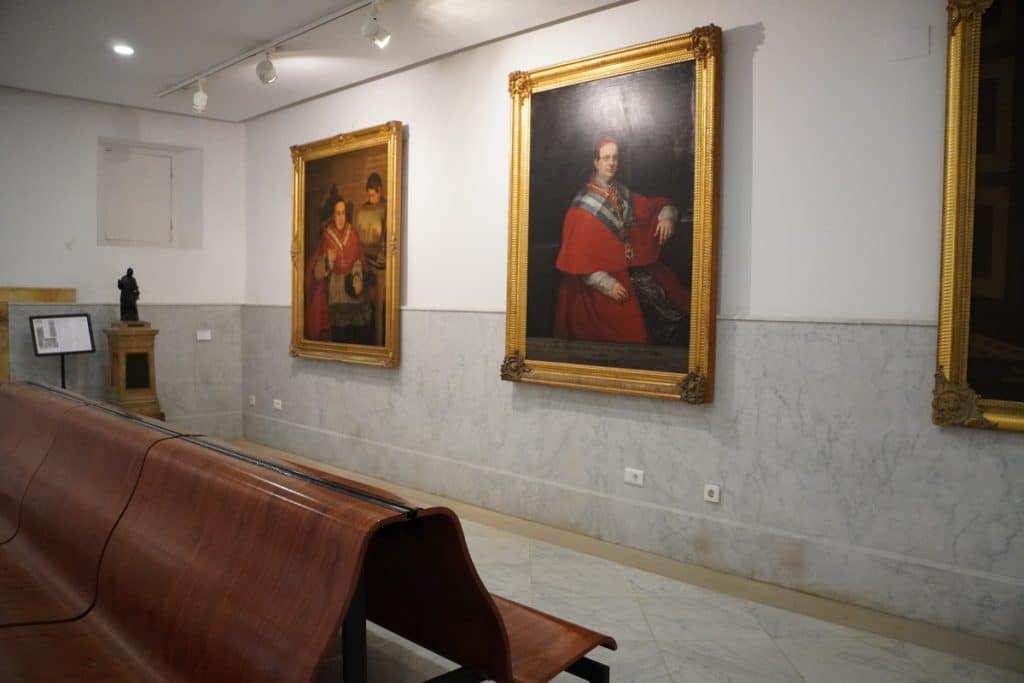
For example, impressive paintings by famous Spanish artists such as Alonso de Tobar and Damaskinós are on display. Flemish art from the 16th century is represented by works by Juan de Borgoña, for example.
In some rooms, we were able to admire sacred vessels and beautiful pieces made by goldsmiths. Ornately embroidered vestments that were worn on certain church occasions are also on display in the museum.
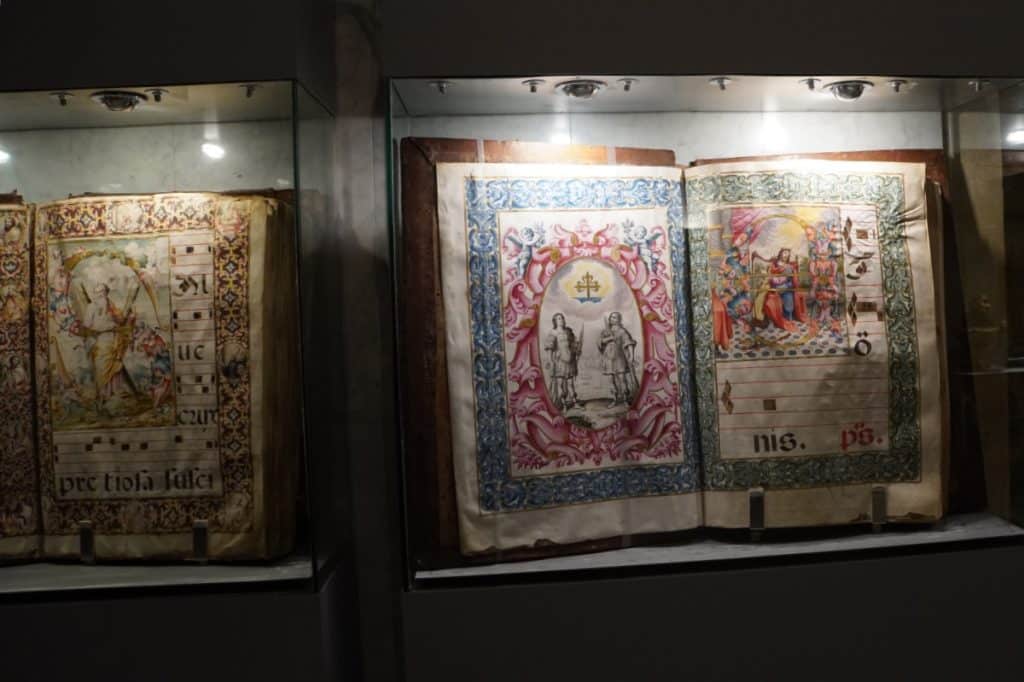
I was particularly impressed by the choir books from the 17th, 18th and 19th centuries. Huge books with thick leather bindings stand on shelves. Some are open in display cases and show the beautifully designed handwritten pages.
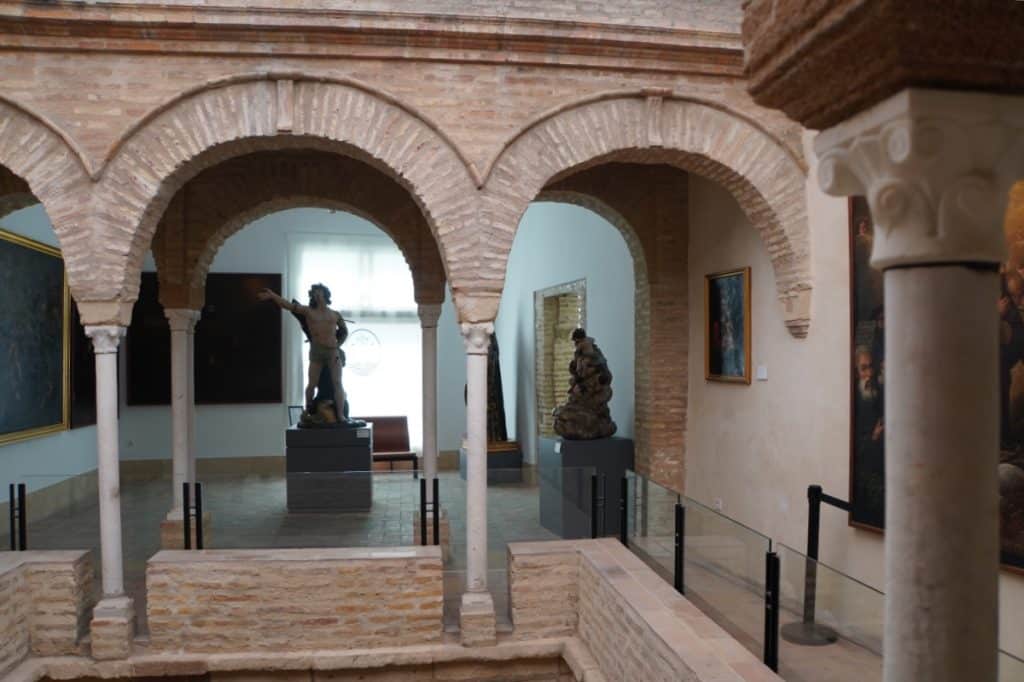
Address:
Catedral de Cádiz
Plaza Catedral s/n
11005 Cadiz
Opening Hours:
Cathedral
Monday – Saturday: 10 -19 h
Sunday: 13.30-19 h
The cathedral is closed to visitors on January 1 and 6 and on December 25.
Torre del reloj
Monday-Saturday: 10 -19 h
Sunday: 12-15 h and 15.30 – 19 h
Casa de la Contaduría
Monday-Saturday: 10 -16.30 h
Admission prices:
Adults (all): 7,- €
Adults (cathedral): €5
The visit to Cádiz Cathedral was made possible by Cádiz Tourism.
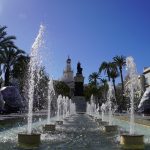


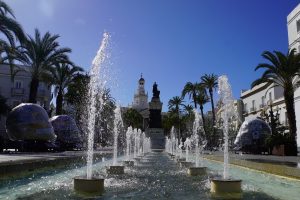
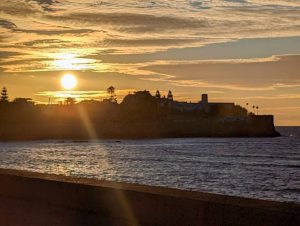

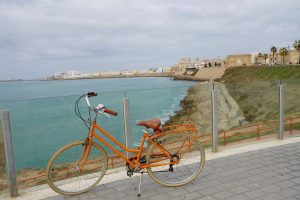
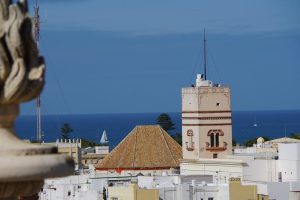
Leave a Reply